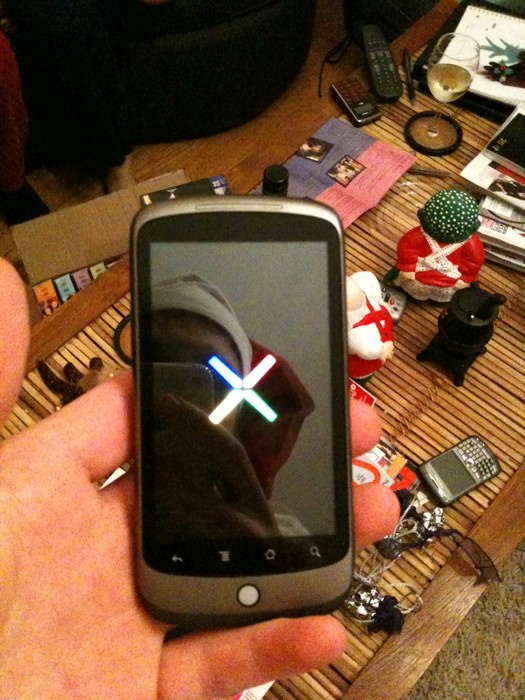
The Nexus One debacle: How does one beta test a phone?
The first absolute confirmation of the existence of the "Google Phone," as no one calls the Nexus One now, came when the company admitted it had distributed a few hundred models to its employees, now exactly one month ago. It could be the single shortest beta test period in the history of Google, especially compared to the number of years Gmail bore the "beta" tag before it was quietly removed last spring.
Clearly after the first week of Nexus One's retail availability, Google has proven itself not ready for instant launches. In one sense, the problem is actually systemic: For a new product to build market momentum leading up to its launch, its manufacturer needs not only to maintain secrecy but to nurture that secrecy like a cash crop -- Apple is easily the best company at nurturing secrecy as a virtue of any company, in any industry, in history. By contrast, the whole beta test process, and the basis of Google's software development model up to this point, has been transparency -- a type of openness which, when applied to the realm of hardware, feels more like nakedness.
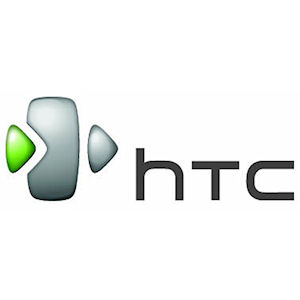
HTC admits customers have Nexus One 3G trouble, not yet blaming the phone
If samples from customer support threads are an accurate indicator, hundreds and perhaps thousands of early adopters of Google's Nexus One phone aren't looking for humanity from some pinstripe or tapered edges, so much as from customer support.
A spokesperson for HTC, the manufacturer of the Nexus One phone sold by Google and deployed thus far on T-Mobile's GSM network, told Betanews late Monday evening that it is aware of the magnitude of 3G connectivity problems reported by customers nationwide since last week. As of Monday evening, several hundred messages were posted to Google's support Web site, many reporting essentially the same problem: For the most part, their 3G connections are spotty and variable; and for some, 3G is non-existent.

Motion picture industry is not a 'cartel,' judge rules in RealDVD case
For years, RealNetworks has wanted to produce and sell a product called RealDVD that would enable the legal owners of DVD movies to copy their content onto a hard disk drive, in order that the original discs may stay protected like archival copies. Movie studios responded in September 2008 by suing Real, alleging that its technology intentionally circumvented their copy control system -- a circumvention that violated the US Digital Millennium Copyright Act. That led to an injunction barring any sale of RealDVD, which is still in force today.
Real then responded with a countersuit, blasting the movie studios with an allegation that they were leveraging the DMCA as a platform on which to build a kind of content cartel -- a mechanism that disables viewers and the companies that sell to viewers from using DVDs in any other way besides direct viewing, that doesn't involve a licensing agreement. Last Friday, the judge in that ongoing suit ruled that Real had not proven the basis of its argument, noting that at any time, Real was free to enter into its own individual licenses for copying DVDs, and that there's nothing to stop it from doing so.

Microsoft's Bach points to new cloud-centric Windows Mobile, over time
During a Thursday financial analysts' conference at CES 2010, whose transcript has recently been released by Microsoft (DOCX available here), Microsoft Entertainment & Devices division president Robbie Bach painted a broad-brushstroke picture of the Windows Mobile-related announcement the company intends to make next month at Mobile World Congress in Barcelona. Certain carefully phrased elements of that broad outline do offer distinct clues as to the direction the company plans to take with the product, which may be different than some have speculated.
Most telling of all is an analogy Bach cited that implies that whatever does get revealed in five weeks' time may not be a product or service in its entirety, but rather the beginning of a long-range construction project that had not been under development during all this time that customers had been waiting for Windows Mobile 7.

CES 2010: What did we learn this week?
Without a doubt, Android has emerged from CES 2010 as the software platform story of the year. In a strange way, the sudden surge of activity for the platform prior to CES, and even prior to Google's Nexus One announcement the day before CES, is what substantiated the presence of Android in the public discussion this year. Up until now, Linux on the smartphone has been perceived as an "alternative" to the branded systems -- last year, Android seemed to be the culmination of something going on in the "open" space, out there somewhere, categorized under "Other."
Android is not "other" any more. It is here, and very much at the center of things.
So as we look back on our flashpoints from last Tuesday -- the topics we set out to watch throughout the show -- what we find are fewer surprises...but the few we got were big ones.

Comcast may get legal leverage to stop net neutrality enforcement
According to multiple eyewitness reports Friday, including from the Associated Press and from participants in the hearings, a three-judge panel of the US Court of Appeals for the DC Circuit in Washington yesterday, hearing oral arguments in the Comcast v. FCC case challenging possible net neutrality regulation, appeared skeptical of the FCC's authority to enforce such regulation based on a policy statement, rather than law.
At issue in this landmark case is whether the US Federal Communications Commission has the authority under law to force Comcast not to implement per-application throttling techniques in the name of network management -- for instance, slowing down BitTorrent traffic. Back in August 2008, the FCC found Comcast in violation of rules, and ordered the company to cease any network management practice that discriminated against lawful services that customers could use for lawful purposes.
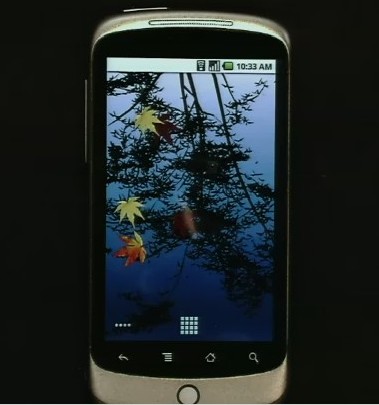
The flip side of Nexus One: Low early marks for Google, the retailer
The revolution, if there is one, may not be automated. In the early going for Google's Nexus One phone, made by HTC and announced Tuesday, customers are learning that "support" for this phone is about as personal as Google Maps. Amid the immersive purchasing experience touted by Google executives during their Tuesday barn-raising ceremony, customers are discovering a definitive lack of the personal touch.
Exemplifying many of the problems early customers are having this week is a post this morning to the Nexus One support site by customer Martin Thorborg. He was paying full price for the unlocked phone, but had the simple problem of trying to get Google to ship the phone to his new address, after having moved since first creating his Google account. Attempts to change his shipping address with both Google and FedEx were all met with automated responses, telling him he was not allowed to cancel his order -- which he wasn't trying to do. Then later, FedEx sent him an automated message telling him he could not change the shipping address on his order "for security reasons."
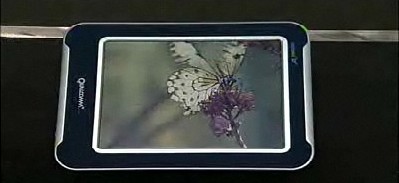
Qualcomm CEO Jacobs reveals Chrome OS deal, color e-ink-like display
In his company's first-ever keynote address to the Consumer Electronics Show Friday morning, Qualcomm CEO Dr. Paul Jacobs made a kind of prediction that appears, given his position, to inevitably become a self-fulfilling prophecy: As consumer electronics devices throughout the home, mobile space, and workplace become endowed with systems-on-a-chip that are based on wireless phone reference designs, almost everything with an on-switch will inevitably become, at its core -- whether it's used for that purpose or not -- a telephone.
"Those same chips that we put...into the cell phone, those chips are now going to go into the consumer electronics devices themselves," Jacobs told attendees. "So we believe that consumer electronics devices are essentially going to be phones inside. I mean, they'll look different, right? Different shapes, different sensors, different buttons, a little different software. Fundamentally, inside though, they're going to be cell phones, I think. And it's Qualcomm that's helping to drive that innovation."

CES 2010 The Story So Far: 'I'm a PC' is in jeopardy
If you're a 2.0 GHz quad-core notebook PC running Windows 7, the place you do not want to be showing yourself right now is the Consumer Electronics Show. Like any other year, CES is about platform evolution, sometimes revolution. Where the most concepts evolve is where the action revolves, and this year it's around the growing confidence that manufacturers have finally found a small form factor they can invest in and make money on.
Netbooks, throughout their brief history, have been cheap, rubber-stamp PCs. That won't be the case for very long, as both Intel and Qualcomm now have argued strong cases in favor of multicore connectivity devices with limited, though functional, computing power for the consumer. There will be strong competition in this field, with Intel's Atom head-to-head in the consumer space against Qualcomm's Snapdragon, and with OEMs everywhere testing both brands and favoring neither over the other at this early stage.
What makes these platforms lucrative is that OEMs can keep their handle on them after the devices are sold. This will especially be the case for netbooks running Google's Android and Intel's Moblin flavors of Linux. During his evening keynote yesterday, Intel's Paul Otellini demonstrated the developmental state of Moblin by way of its app store, which Intel is calling "AppUp." OEMs will be able to put their own flavor on these stores, however; so Dell, for instance, will have a different storefront from HP, even though many of the same apps will be available both places.
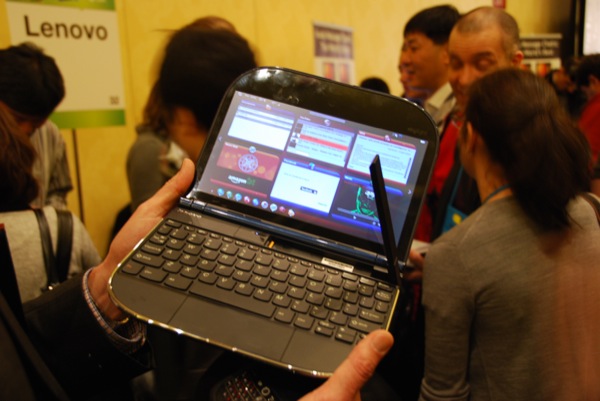
Qualcomm's multicore Snapdragon will battle Intel's Atom using AMD's factory
It may be the biggest partnership win outside of AMD that Global Foundries -- the new company managing AMD's former fabrication facilities -- may ever have, or need to have, and it will be the talk of CES in just a few hours: Qualcomm has signed an agreement to be Global Foundries next big customer, with plans to produce smartphone and smartbook components at Fab 1 in Dresden, Germany this year.
Fab 1 is AMD's former Fab 36 -- the main production facility for AMD's 45 nm quad-core CPUs, which Global Foundries produces for AMD today. It's one of the crown jewel facilities for fabricating multicore chips anywhere in the world, now being fitted for the high-k-plus-metal-gate process developed with IBM. With Global Foundries producing Snapdragon chips for Qualcomm -- as its CEO, Dr. Paul Jacobs, will likely make official during a CES keynote later this afternoon -- Qualcomm may not just go toe-to-toe against Intel's Atom both qualitatively and quantitatively, but may even have a leg up.
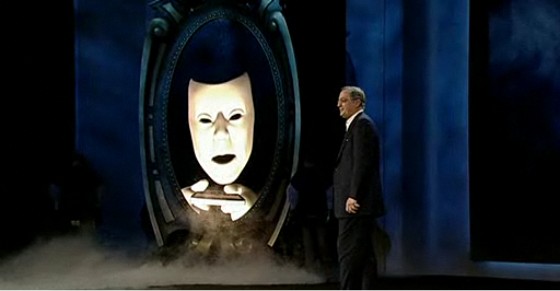
CES 2010 Intel CEO Otellini: Intel to enter apps market on netbooks with 'AppUp"
Today, Intel CEO Paul Otellini is absolutely not expected to come to the keynote stage at CES 2010 empty-handed. Already this morning, the company launched its GPU-on-a-die "Westmere" architecture 32 nm CPUs, with graphics processors sandwiched right in. Windows 7 computers from Toshiba and others with Westmere processors went on sale nationwide this morning.
And we're also likely to hear a lot about Intel's next generation Atom processor and platform, and see some of the small computers and devices that utilize it. Atom's greatest competition in recent days comes not from AMD but from Qualcomm, whose Snapdragon platform powers Lenovo's newest Linux-based "smartbook," the Skylight.
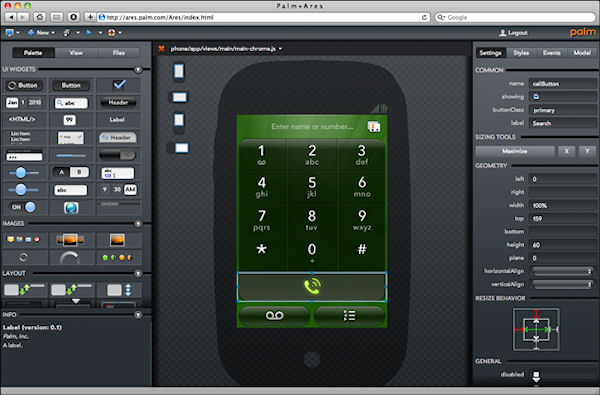
Palm opens up its webOS developer platform to catch up with Android
Palm's webOS was introduced at CES last year at this time, and it literally stole the show; in fact, this year, no other single product has yet generated the buzz of the Pre and webOS. But Android caught up extremely fast, and only very recently, with a surge in development activity during the latter part of 2009 coinciding with the release of Android 2.0-capable smartphones.
Now with webOS phones coming to the Verizon Wireless network with the "Plus" moniker tacked on ("Plus" meaning for some folks, "not Sprint"), Palm is acting as fast as it can to bring back developer momentum. Today at CES, in an announcement timed to coincide with the Pre Plus and Pixi Plus releases, Palm announced it's changing the terms of its webOS developer program. Starting now, developers who intend to distribute their apps on the Palm webOS Catalog using an open source license will have their $99 registration fees waived. One developers' page called this a "limited time" offer.
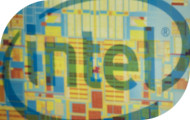
Intel risks 'bundling' graphics processor with new Core 32 nm CPUs
We've seen integrated graphics from Intel for several years, integrated into the chipsets of value-priced desktop and notebook PCs. Intel's 3D rendering capability has never been superior to that of discrete GPUs such as Nvidia's or ATI's but it's never had to be. But today, adhering to a plan set out by Intel in September 2008, that integration moves one step further, moving the company's 45 nm iGFX graphics processor onto the same die along with the 32 nm Core processor.
That means integrated graphics is not just for motherboards any more. Using the high-k-plus-metal-gate lithography process breakthrough announced in January 2007, which premiered during the previous 45 nm "Nehalem" generation, Intel's new "Westmere" generation CPUs for Core i3, i5, and i7 will feature a graphics processor clocked as high as 900 MHz -- essentially the same one used in Intel's previous integrated graphics chipsets.
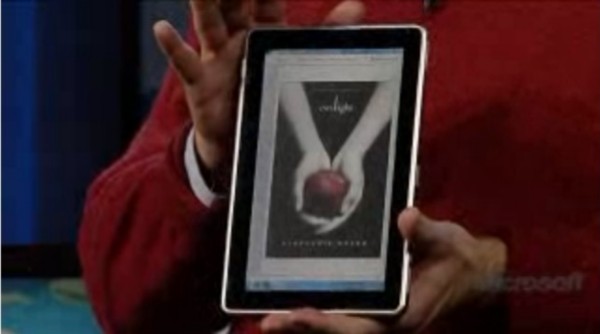
CES 2010: Where did Windows Mobile go, and what will take its place?
Microsoft's big theme coming out of 2009 was "Three Screens and a Cloud." Thanks to a few power outages punctuating yesterday evening's keynote, there were often more clouds than there were screens. But when the smoke and the steam cleared, it turned out there was one less screen than people were expecting -- in some respects, the biggest screen of all: the small screen.
I discussed the lack of progress on the Windows Mobile front earlier this afternoon with Contributing Analyst Carmi Levy.
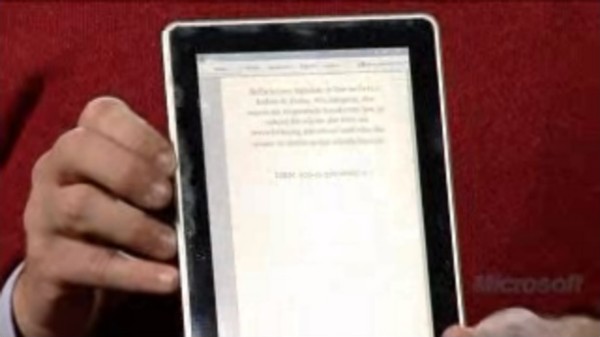
HP: 'Slate' PC shown by Ballmer set for some time in 2010
A Hewlett-Packard spokesperson would only confirm to Betanews this morning that the unnamed 'slate' PC demonstrated by Microsoft CEO Steve Ballmer during his keynote address to CES 2010 yesterday evening, was not a current entry in the TouchSmart series being demonstrated to consumers by HP at the show this week. Rather, it's a completely new product that will likely have a new brand and a special campaign, and its availability is only being slated for "this year."
With a number of other PCs being unveiled yesterday for near-immediate availability, including the convertible TouchSmart tm2 tablet/notebook (available January 17 at $949 MSRP), it would appear the earliest product cycle that the HP "slate" would make is the back-to-school timeframe. That would peg a product announcement for around August. Expect the price point to be premium.

